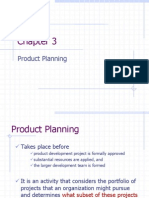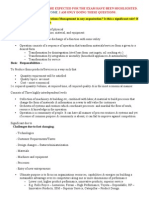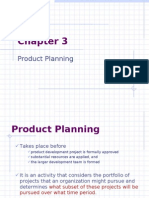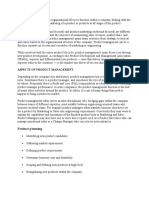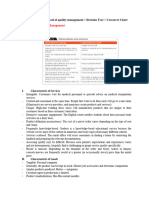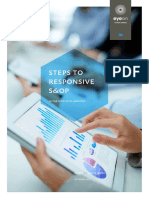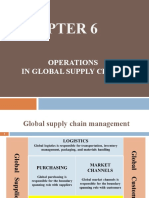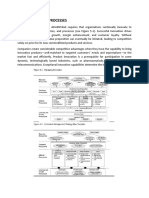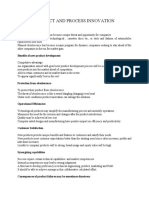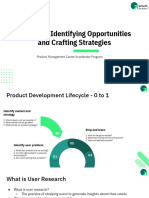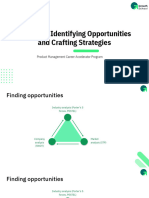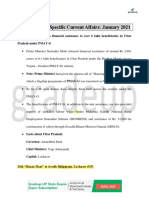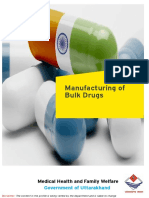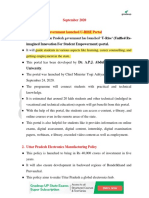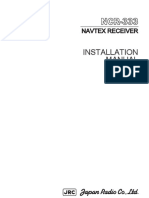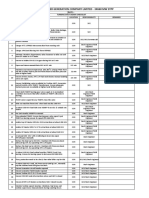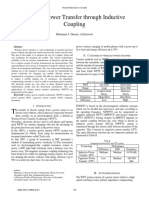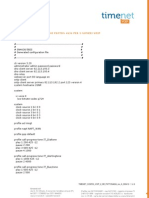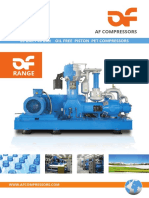0% found this document useful (0 votes)
27 views16 pagesModule 3 - Session 1
This document discusses identifying opportunities and crafting strategies in the product development lifecycle. It covers identifying user problems, aligning stakeholders, defining the solution, building the product, and shipping/learning from launches. It also discusses analyzing the industry context through frameworks like Porter's 5 Forces and PESTEL analyses to understand factors like competition, suppliers/buyers, substitutes, and political/economic/social/technological/legal landscapes. Understanding the industry helps define the market and product strategy for a new venture.
Uploaded by
aveaCopyright
© © All Rights Reserved
We take content rights seriously. If you suspect this is your content, claim it here.
Available Formats
Download as PDF, TXT or read online on Scribd
0% found this document useful (0 votes)
27 views16 pagesModule 3 - Session 1
This document discusses identifying opportunities and crafting strategies in the product development lifecycle. It covers identifying user problems, aligning stakeholders, defining the solution, building the product, and shipping/learning from launches. It also discusses analyzing the industry context through frameworks like Porter's 5 Forces and PESTEL analyses to understand factors like competition, suppliers/buyers, substitutes, and political/economic/social/technological/legal landscapes. Understanding the industry helps define the market and product strategy for a new venture.
Uploaded by
aveaCopyright
© © All Rights Reserved
We take content rights seriously. If you suspect this is your content, claim it here.
Available Formats
Download as PDF, TXT or read online on Scribd
/ 16

